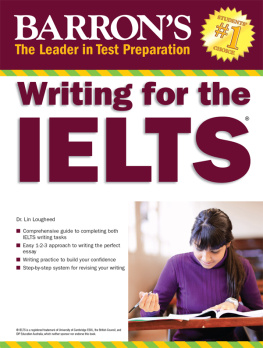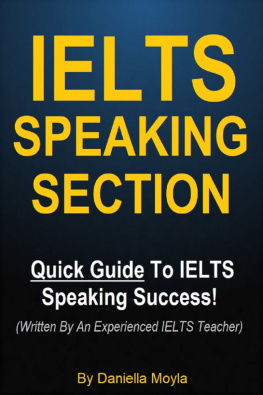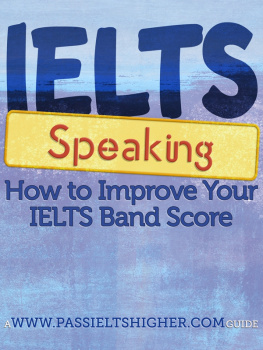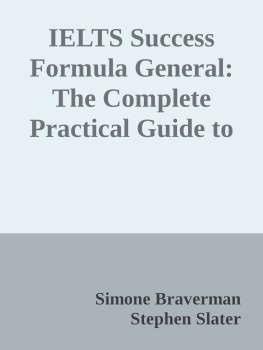IELTS WritingSection
(GeneralTraining)
How To Achieve A Target 8 Score!
By TimDickeson
Copyright by Tim Dickeson 2014
Published by SanbrookPublishing
Smashwords Edition
Limits ofLiability / Disclaimer of Warranty:
The author andpublisher of this book and the accompanying materials have usedtheir best efforts in preparing this program. The author andpublisher make no representation or warranties with respect to theaccuracy, applicability, fitness, or completeness of the contentsof this program. They disclaim any warranties (expressed orimplied), merchantability, or fitness for any particular purpose.The author and publisher shall in no event be held liable for anyloss or other damage, including but not limited to special,incidental, consequential, or other damages. As always, the adviceof a competent legal, tax, accounting or other professionals shouldbe sought.
This manualcontains material protected under International and FederalCopyright Laws and Treaties. Any unauthorized reprint or use ofthis material is prohibited.
IELTS isjointly owned by British Council, IDP: IELTS Australia and theUniversity of Cambridge ESOL Examinations (Cambridge ESOL).
ISBN:9781311035851
*****
Table ofContents
Who This Book Is For
This book isfor you if you are about to take the IELTS exam and want directinstructions for how to write high scoring answers in the IELTSwriting section (General Training test mode).
This materialis perfect for you if:
You didnt obtain thescore you wanted in the writing section
You dont know how toidentify the possible question types you could receive
You dont know how todevelop the correct structures for the different question types
You dont know how toformulate a high scoring letter (Task 1)
You dont know how towrite a high scoring introduction (Task 2)
You dont know how towrite high scoring middle (supporting) paragraphs (Task 2)
You dont know how towrite a high scoring conclusion (Task 2)
Your are about to takethe IELTS exam soon and you want clear strategies to use
Module 1 IELTS Outline
What Is The IELTS?
The IELTS(International English Language Testing System) is a test thatevaluates the English proficiency of people with English as asecond language who would like to work or study where English isused as the primary communication language (usually in Englishspeaking countries).
The IELTS testmeasures English proficiency covering: listening, reading, writingand speaking, and uses a 9-band scale to indicate proficiencylevel.
IELTS isrequired for people who want to study at secondary and tertiarylevel and for the application of visas and employment.
The Two Test Modes (Academic / GeneralTraining)
IELTS providestwo types of test modes and the type of test mode that you willneed to take will depend on your circumstances. The two test modesare; Academic and General Training. Lets look at the differencebetween the two test modes.
Academic Evaluates English language competency foracademic and tertiary purposes.
For example University, TAFE
GeneralTraining Evaluates English language competency in apractical, living context.
For example Employment, Visas
Note: The Academic and General Training test modes aregraded using the same criteria for the writing section of theIELTS.
Scoring Structure How IELTS Will Score You
Your IELTSscore will be given between 0 9 for each of the four sections andthen an overall score given between 0 9.
Below showsthe scoring range for each section and the overall score.
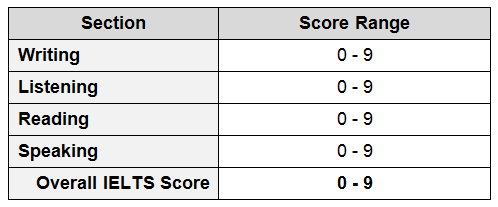
The scorebands as shown below outline the competency of the student and thescores are given in 0.5 point increments.

Module 2 IELTS Writing Section Overview
What Is The WritingSection?
The Writingsection is an important section because there are only two parts tothis section so there is less room for error.
The Writingsection of the IELTS tests your ability to write effectively in theform of well-structured answers with correct sentence structure,grammar, spelling and vocabulary.
What Is The AnswerFormat?
There aretwo writing tasks and BOTH must be completed within the 60 minutetime limit.
Answers mustbe given on the answer sheet and must be written in full.
Notes orbullet points in whole or part are not acceptable as answers.
Timing
60 minutesfor both sections.
Marks
The twotasks are scored independently, however Task 2 is worth double themarks of Task 1.
Writing Section Difference Between The Two Test Modes
The maindifference lies in the content/topic of what the questions asks youto write about. The General Training moderequires more simple styled writing associated with personal ideas.However the Academic mode requires moreformal and descriptive answers.
The tablebelow outlines the requirements for both test modes:
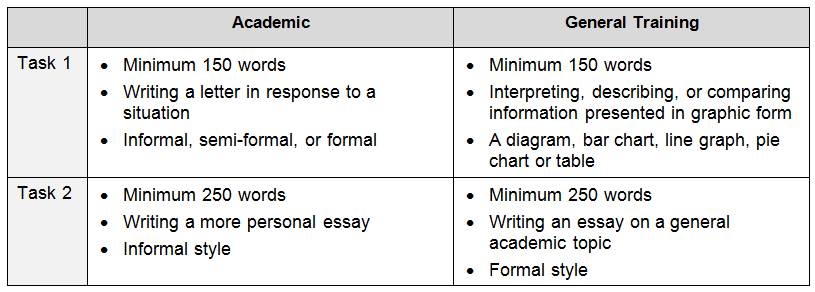
WritingSection General Training Test Mode
The GeneralTraining writing section evaluates your ability to discuss everydaytopics. In addition, you could be asked to present your opinion ormake suggestions, and discuss other opinions and views.
WritingSection Academic Writing Test Mode
The Academicwriting section measures your ability to write in clear, formalEnglish used in an academic context.
Module 3 Writing Task 1
Unit 1 Writing Task 1Introduction
Objective of this Unit: To understand what writing task 1is.
What Is WritingTask 1?
For writingtask 1, you are required to write a letter to a friend, Governmentagency or interest group etc. The level of formality of the letterwill depend on who you are writing to and how well you knowthem.
You will begiven a brief description of a problem or situation, followed bybullet point instructions on what to include in your letter.
You need tomake sure you respond to every bullet point.
Why Do ManyPeople Find Task 1 Difficult?
This task isdifficult for many people simply because they are not sure how towrite their answer in the way that the IELTS evaluators want tosee.
Many peoplealso become confused with the level of formality which they shoulduse and do not know how to identify which level of expression andvocabulary to use either.
Once you knowhow to identify the required formality of the question, the correctstructure for the letter, and how to develop the answer in the waythe evaluators want to see, it becomes very easy.
This modulewill show you exactly how to do this.
Unit 2 Developing A SystemFor Your Letter
Objective of this Unit




